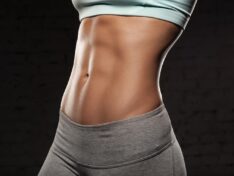The Ultimate Push-Pull-Legs (PPL) Workout Plan for Building Serious Muscle Mass
Transform your physique with this science-backed 6-day training split that actually works

Let's be honest. You've probably tried push-pull-legs before. Maybe you found some cookie-cutter routine online, hit the gym with good intentions, and after a few weeks... nothing. Your biceps didn't suddenly burst through your sleeves, your chest didn't become a shelf for your protein shaker, and your legs still looked like they belonged to a marathon runner instead of a powerlifter.
Here's the thing: PPL isn't the problem. The problem is that most push-pull-legs programs treat every muscle group like they're identical twins who need the exact same attention. Spoiler alert: they're not.
TL;DR: The Complete Guide
- What it is: A 6-day push-pull-legs (PPL) split alternating between two workout variations for maximum muscle growth
- Who it's for: Intermediate to advanced lifters ready to commit to structured, progressive training
- Time commitment: 60 minutes per session, 6 days per week
- Key principle: Progressive overload through systematic weight and rep increases
- Results timeline: Visible changes in 4-6 weeks, significant mass gains in 3-6 months
- Required mindset: Consistency over perfection, patience over instant gratification
This comprehensive push-pull-legs workout plan fixes those common mistakes by incorporating periodized volume, strategic exercise selection, and progressive overload principles that actually build muscle mass. Whether you're an intermediate lifter looking to break through plateaus or an advanced trainee seeking structured muscle growth, this program delivers results.
Why Most Push-Pull-Legs Programs Fail (And How This One's Different)
I've watched countless gym bros cycle through PPL routines like they're changing underwear. They'll find a program on Reddit, follow it religiously for three weeks, then abandon it because their arms didn't magically transform into pythons. The issue isn't the concept of push-pull-legs training. The issue is execution.
Most push-pull-legs split training programs fail because they ignore the fundamental principles of muscle hypertrophy. They throw exercises together without considering volume landmarks, they neglect progressive overload systematically, and they treat every training session like it exists in a vacuum. This program addresses each of these problems head-on.
Why Push-Pull-Legs Works for Muscle Hypertrophy
The beauty of PPL split training lies in its simplicity and recovery optimization. By grouping muscles based on movement patterns rather than arbitrary body parts, you're able to maximize training frequency while allowing adequate recovery time. You can hit each muscle group twice per week for optimal protein synthesis while preventing overuse injuries by distributing the workload across multiple muscle groups and joints.
Research consistently shows that training each muscle group 2 to 3 times per week produces superior hypertrophy compared to once-weekly "bro splits." This push-pull-legs routine hits that sweet spot perfectly. Your muscles don't need a full week to recover from one training session. They need 48 to 72 hours, which this program provides while maintaining high-frequency stimulation.
The Progressive Overload Foundation
Here's where most people mess up completely. They think muscle-building workouts are just about showing up and moving weight around. Wrong. Progressive overload is the non-negotiable foundation of muscle growth. It's gradually increasing the demands on your muscles over time through systematic progression in weight, reps, sets, or training density.
This program builds progressive overload into every session through:
- Systematic rep and weight progression
- Periodized volume increases
- Strategic exercise variation
- Built-in deload weeks for recovery
Without progressive overload, you're essentially asking your muscles to stay exactly the same size forever.
The Science Behind Effective Push-Pull-Legs Training
Understanding the physiology behind muscle growth helps explain why this particular 6-day workout routine produces results where others fail. Muscle protein synthesis (the process by which your body builds new muscle tissue) peaks within 24 to 48 hours after training and returns to baseline within 72 hours for most individuals.
This means that waiting a full week between training sessions leaves significant muscle building potential on the table. The twice-weekly frequency of this PPL program keeps muscle protein synthesis elevated more consistently, leading to superior hypertrophy outcomes over time.
The movement pattern grouping also allows for better recovery management. When you train chest, shoulders, and triceps together (push day), your pulling muscles remain fresh for the following session. This prevents the cascading fatigue that often derails other training splits and allows you to maintain higher intensities throughout the week.
The Complete 6-Day Push-Pull-Legs Workout Split
This program follows a structured approach that alternates between two versions of each training day. You'll perform Push A, Pull A, Legs A, Push B, Pull B, Legs B, then rest. This variation prevents the soul-crushing monotony of identical workouts while maintaining the consistency needed for adaptation.
Weekly Schedule: Push/Pull/Legs/Push/Pull/Legs/Rest pattern
Training Parameters:
- Session duration: 60 to 90 minutes
- Compound movements: 5 to 8 reps, 2 to 3 minutes rest
- Isolation movements: 8 to 15 reps, 90 seconds rest
- Intensity: Start with 1 to 2 reps in reserve, progress to near-failure
Training Schedule and Structure
The beauty of this system lies in its flexibility within structure. You can adjust training days based on your schedule while maintaining the push/pull/legs pattern. Some people prefer Monday/Tuesday/Wednesday/Friday/Saturday/Sunday training with Thursday off. Others prefer straight Monday through Saturday with Sunday rest. You could also rotate this schedule endlessly, if work or life get in the way for your day off. The key is consistency, not perfection.
Each training session should take roughly 60 minutes depending on your rest periods and gym efficiency. If you're spending two hours per session, you're either resting too long between sets or spending too much time on your phone. Keep the intensity high and the rest periods honest.
Push Day A: Chest-Focused Power Session
Monday is international chest day for a reason. Starting the week with a challenging pressing session sets the tone for everything that follows. This chest and shoulder workout prioritizes compound movements when your energy levels are highest, then moves to isolation work to maximize muscle development.
The Workout
- Barbell Bench Press – 4 sets × 6-8 reps
- Incline Dumbbell Press – 3 sets × 8-10 reps
- Overhead Press – 4 sets × 6-8 reps
- Dips – 3 sets × 8-12 reps
- Lateral Raises – 4 sets × 12-15 reps
- Close-Grip Bench Press – 3 sets × 8-10 reps
- Overhead Tricep Extension – 3 sets × 10-12 reps
Why This Push Workout Builds Mass
This session prioritizes the bench press when you're fresh because nobody ever got impressively jacked with baby weights. The barbell bench press remains the gold standard for chest development, allowing you to handle the most weight and create the greatest overload stimulus. Starting with your heaviest compound movement ensures you can push maximum intensity when fatigue hasn't accumulated. Mind your shoulders, though, as form is crucial to avoid injury.
The incline work targets your upper chest, which is the part that makes your shirts fit differently and creates that shelf-like appearance everyone wants. The overhead press builds those boulder shoulders that make doorways feel narrow and creates the foundation for a powerful, imposing physique.
Pro tip: If dips make your shoulders feel like they're filing for divorce, substitute with decline push-ups or additional incline pressing. Your ego might prefer dips, but your joints prefer longevity. Listen to your body and make intelligent substitutions when necessary.
Pull Day A: Building That V-Taper
Nothing says "I lift" quite like a back that requires sideways navigation through doorways. This back and bicep workout focuses on building width and thickness simultaneously while developing the pulling strength that balances all your pressing work.
The Workout
- Deadlift – 4 sets × 5-6 reps
- Pull-ups/Lat Pulldowns – 4 sets × 6-10 reps
- Barbell Rows – 3 sets × 8-10 reps
- T-Bar Rows – 3 sets × 10-12 reps
- Face Pulls – 4 sets × 15-20 reps
- Barbell Curls – 3 sets × 8-10 reps
- Hammer Curls – 3 sets × 10-12 reps
The Back-Building Strategy
This session starts with deadlifts because they're the king of all exercises. Deadlifts build everything from your traps to your calves and create the kind of total-body strength that transfers to every other movement. If you're not deadlifting, you're essentially bringing a spoon to a knife fight in the muscle-building arena.
Key insight: The combination of vertical pulling (pull-ups) and horizontal pulling (rows) ensures complete lat development and rhomboid strength. Many people focus exclusively on lat pulldowns and wonder why their backs look flat from the side. Horizontal pulling builds the thickness that creates that powerful, wide appearance from every angle.
Face pulls aren't just Instagram-friendly exercises. They're your insurance policy against the rounded shoulders that come from too much pressing without adequate posterior deltoid work. They also help maintain shoulder health, which becomes increasingly important as training intensity increases over time.
Leg Day A: Quad-Dominant Punishment
Friends don't let friends skip leg day, and definitely don't let them wear shorts after this workout. This leg workout for mass emphasizes quadriceps development while maintaining balanced posterior chain work to prevent imbalances and injury.
The Workout
- Back Squat – 4 sets × 6-8 reps
- Romanian Deadlift – 3 sets × 8-10 reps
- Bulgarian Split Squats – 3 sets × 10-12 reps each leg
- Leg Press – 3 sets × 12-15 reps
- Walking Lunges – 3 sets × 12 steps each leg
- Calf Raises – 4 sets × 15-20 reps
- Leg Curls – 3 sets × 12-15 reps
Building Tree-Trunk Legs
This leg workout for mass puts squats first because that's when you can handle the most weight and create the most muscle-building stimulus. The back squat remains unmatched for building overall leg mass and strength. It's a full-body exercise disguised as a leg movement, requiring core stability, upper back strength, and mental fortitude.
Critical point: Romanian deadlifts ensure your hamstrings don't become the weak link in your posterior chain. Many people squat religiously but neglect hamstring development, creating imbalances that limit their squat progress and increase injury risk. RDLs address this while building the kind of hamstring and glute development that actually fills out jeans properly.
Bulgarian split squats deserve special mention because they're basically single-leg torture devices that expose strength imbalances faster than a lie detector test. You might hate them while you're doing them, but you'll love the results they produce. They build single-leg strength, improve balance, and create the kind of quad development that makes your legs look impressive from every angle.
Push Day B: Shoulder-Focused Development
The second push session of the week flips the script by prioritizing shoulder development while maintaining adequate chest volume. This approach ensures balanced upper body development and prevents the overdeveloped chest, underdeveloped shoulder look that plagues many lifters.
The Workout
- Overhead Press – 4 sets × 6-8 reps
- Incline Barbell Press – 3 sets × 8-10 reps
- Dumbbell Bench Press – 3 sets × 10-12 reps
- Arnold Press – 3 sets × 10-12 reps
- Lateral Raises – 4 sets × 12-15 reps
- Rear Delt Flyes – 3 sets × 12-15 reps
- Diamond Push-ups – 3 sets to failure
This session starts with the overhead press to prioritize shoulder strength and development. The overhead press is arguably the most challenging upper body exercise because it requires total-body stability and strength. Building a strong overhead press translates to better performance in virtually every other upper body movement.
Training wisdom: Arnold presses add a rotation component that hits the delts from multiple angles throughout the range of motion. If this exercise was good enough for the Austrian Oak during his competitive bodybuilding career, it's definitely good enough for those of us with more modest genetic gifts. The rotation creates constant tension on the deltoids while improving shoulder mobility.
Pull Day B: Thickness and Detail Work
The second pull session shifts focus toward building back thickness and detail work. While Pull Day A emphasizes width development, this session targets the muscles that create depth and thickness when viewed from the side.
The Workout
- Rack Pulls – 4 sets × 5-6 reps
- Chest-Supported Rows – 4 sets × 8-10 reps
- Wide-Grip Lat Pulldowns – 3 sets × 10-12 reps
- Cable Rows – 3 sets × 10-12 reps
- Shrugs – 3 sets × 12-15 reps
- Preacher Curls – 3 sets × 10-12 reps
- Cable Curls – 3 sets × 12-15 reps
Exercise spotlight: Rack pulls allow you to handle heavier weights than full deadlifts by starting from an elevated position. This builds upper back thickness and trap development while teaching your body to handle heavier loads. The partial range of motion isn't cheating; it's specificity training for the lockout portion of the deadlift.
Chest-supported rows eliminate momentum and force your lats and rhomboids to do all the work. No more using your entire body to row the weight your ego selected. This exercise builds the kind of thickness that makes your back look powerful from the side while improving posture and shoulder health.
Leg Day B: Posterior Chain Powerhouse
The second leg session addresses the most neglected muscle groups in most training programs. This hamstring and glute workout builds the posterior chain strength and development that creates athletic power and impressive physique development.
The Workout
- Romanian Deadlift – 4 sets × 6-8 reps
- Front Squat – 3 sets × 8-10 reps
- Hip Thrusts – 4 sets × 10-12 reps
- Single-Leg RDL – 3 sets × 8-10 reps each leg
- Leg Curls – 4 sets × 12-15 reps
- Goblet Squats – 3 sets × 15-20 reps
- Seated Calf Raises – 4 sets × 15-20 reps
This session starts with Romanian deadlifts to prioritize hamstring and glute development when you're fresh. The RDL is perhaps the best exercise for building posterior chain strength and size simultaneously. It teaches proper hip hinge mechanics while building the kind of hamstring development that actually contributes to athletic performance.
Reality check: Hip thrusts might look awkward in the gym, but they're glute-building gold. Research consistently shows that hip thrusts activate the glutes more effectively than squats or deadlifts. Your future self will thank you when you can actually fill out a pair of jeans and generate serious power from your hips.
Progressive Overload: The Secret Sauce
Understanding and implementing progressive overload separates successful lifters from those who spin their wheels indefinitely. Progressive overload isn't just adding weight to the bar randomly. It's systematic progression that challenges your muscles in measurably greater ways over time.
The concept seems simple, but the execution requires patience and consistency. Most people want to add weight every single workout, which leads to form breakdown and eventual plateaus. This program provides a structured approach that balances aggression with sustainability.
Weekly Progression Protocol
Weeks 1-2: Foundation Phase: During this initial phase, focus on movement quality and establishing baseline weights. Leave 2 to 3 reps in reserve on most sets. Your primary goal is mastering the mind-muscle connection and developing proper movement patterns. This isn't the time to test your limits; it's the time to build the foundation for future progress.
Weeks 3-4: Building Phase: Add weight when you can complete all sets within the given rep range with good form. Push closer to failure, leaving only 1 to 2 reps in reserve. Begin tracking every workout religiously because this data becomes crucial for making informed progression decisions. Small increases in weight or reps compound dramatically over time.
Weeks 5-6: Intensity Phase: Train within 1 rep of failure on most sets. Focus on progressive overload through weight increases, additional reps, or extra sets. This is where the magic happens, but it's also where most people either make breakthrough progress or burn out from pushing too hard too fast.
Week 7: Deload Week: Reduce weights by 10 to 15% while maintaining movement patterns. This allows your body to recover and adapt to the accumulated stress from the previous six weeks. Your muscles grow during recovery periods, not during workouts. Deload weeks aren't optional; they're strategic recovery periods that prevent burnout and injury.
Adding Weight Like a Pro
Compound movements: Add 2.5 to 5 pounds when you can complete all sets at the top of the rep range with good form. Small jumps build long-term strength better than ego-driven leaps. A 5-pound increase every two weeks on your bench press equals 130 pounds over a year, which would transform most people's physiques.
Isolation movements: Add weight, reps, or sets when the current load feels too easy. Sometimes progression means doing 15 reps instead of 12, not always adding plates. The goal is creating progressive tension, not just moving heavier weights.
Nutrition for Maximum Muscle Growth
Building muscle requires more than just lifting weights consistently. Nutrition for muscle growth provides the raw materials your body needs to repair and build new muscle tissue. Without adequate calories and nutrients, even the perfect training program produces mediocre results.
The relationship between training and nutrition is symbiotic. Great training with poor nutrition limits muscle growth. Great nutrition with poor training produces minimal muscle development. Excellence in both areas creates the synergy needed for significant physique transformation.
Caloric Requirements for Muscle Building
Target calories: 2,800 to 3,200 daily (adjust based on progress)
This might seem high, but building muscle requires energy. You wouldn't try to build a house without materials, so don't try to build muscle without adequate calories. Track your weight weekly and adjust intake based on progress:
- Gaining too fast (more than 1.5 pounds per week): Reduce calories by 200 to 300
- Not gaining enough (less than 0.5 pounds per week): Increase calories by 200 to 300
- Sweet spot: 0.5 to 1 pound per week of steady gain
Macronutrient Breakdown
Protein (140 to 160g daily): Muscle protein synthesis requires adequate amino acids throughout the day. Distribute protein intake across meals, targeting 25 to 40g per meal. Quality sources include lean meats, fish, eggs, dairy, and protein powder. Don't overthink protein timing; consistency matters more than precision.
Carbohydrates (250 to 350g daily): Carbs fuel high-intensity training and support recovery. Higher intake around workouts enhances performance and glycogen replenishment. Quality sources include rice, oats, potatoes, fruits, and vegetables. Carbs aren't the enemy of muscle building; they're the fuel that powers your workouts.
Fats (80 to 100g daily): Healthy fats support hormone production and overall health. Include sources like nuts, oils, avocado, and fatty fish. Keep fat intake lower around workouts and higher at other meals to optimize digestion and performance.
Supplementation is critical if you want to maximize your nutrition and growth. For more details on how to optimize your workouts for peak performance, take a look at our complete testosterone optimization guide. On the flip-side, there are also testosterone killers you must avoid.
Recovery: Where the Magic Actually Happens
Most people obsess over training variables while completely ignoring recovery factors. This is backwards thinking because muscle growth occurs during recovery periods, not during workouts. Training provides the stimulus, but recovery provides the adaptation.
Sleep optimization represents the most powerful recovery tool available. During deep sleep, growth hormone release peaks, protein synthesis accelerates, and your nervous system recovers from training stress. Compromising sleep quality or duration severely limits your muscle-building potential regardless of how perfect your training and nutrition might be.
Sleep: Your Secret Weapon
Target: 7 to 9 hours nightly
Here's the reality check: you can have the perfect workout program and ideal nutrition, but if you're sleeping 5 hours a night, you're essentially trying to fill a bucket with massive holes in it. Sleep is when muscle protein synthesis peaks, growth hormone releases, and your body repairs the damage from training.
Sleep optimization strategies:
- Keep your bedroom cool, dark, and quiet
- Establish a consistent bedtime routine
- Avoid screens for at least an hour before bed
- Consider blackout curtains or a sleep mask if needed
Hydration and Recovery
Water intake: Minimum 1 gallon daily, more on training days
Dehydration kills performance faster than showing up to the gym without your headphones. Even mild dehydration reduces strength, power, and endurance while increasing perceived exertion. Aim for clear or light yellow urine throughout the day. If it looks like apple juice, you need significantly more water.
Common Mistakes That Kill Progress
Learning from other people's mistakes accelerates your progress while helping you avoid the frustrating plateaus that derail most lifters. These aren't theoretical problems; they're real issues I've observed in hundreds of gym-goers over the years.
Mistake #1: Program Hopping
Sticking with this muscle building routine for at least 8 to 12 weeks is crucial for seeing meaningful results. The temptation to switch programs every few weeks is strong, especially when Instagram shows you the "revolutionary new routine" that promises faster results. Resist this urge completely.
The truth: Consistency beats perfection every single time. A mediocre program followed consistently for six months produces better results than the perfect program followed sporadically for six weeks. Your muscles need time to adapt to training stimuli, and constantly changing programs prevents this adaptation from occurring.
Mistake #2: Ignoring Progressive Overload
If you're lifting the same weights for the same reps month after month, you're essentially asking your muscles to stay the same size forever. Progressive overload isn't optional; it's the fundamental driver of adaptation. Your body only changes when you force it to adapt to increasingly challenging demands.
The solution: Track your workouts religiously and always seek to improve something each week. Whether it's adding weight, performing more reps, or reducing rest periods, progression must be built into every training session. Stagnation is the enemy of muscle growth.
Mistake #3: All-or-Nothing Mentality
Life happens, and perfectionism often becomes the enemy of progress. You'll miss workouts, eat imperfectly, and sleep poorly sometimes. The goal isn't perfection; it's consistency over time. An 80% effort maintained for months beats 100% effort maintained for weeks.
The mindset shift: When you miss a workout, don't try to make up for it by doing extra the next session. When you have a poor eating day, don't starve yourself the following day. Simply get back on track with your next meal or workout. Consistency, not perfection, builds impressive physiques.
Tracking Your Progress Like a Pro
What gets measured gets managed, and muscle building is no exception. Effective progress tracking helps you identify what's working, what isn't, and when modifications are necessary. It also provides motivation during periods when visible changes seem slow.
Measurements That Matter
Weekly weigh-ins: Same time, same conditions (morning, after using the bathroom, before eating). Daily weight fluctuations are normal due to hydration, food timing, and other factors. Weekly averages provide more reliable data for making nutrition adjustments.
Body measurements: Monthly measurements provide more reliable data than the scale for tracking muscle gain. Measure chest, arms, waist, and thighs consistently using the same landmarks. Take progress photos in consistent lighting and poses because visual changes often occur before measurable changes.
Workout performance: This might be the most important metric. If your bench press improves from 185×5 to 225×5 over three months, you've definitely built muscle regardless of what the scale says. Performance improvements often precede visible changes by several weeks.
When to Modify the Program
After 8 to 12 weeks: Assess progress and consider program variations or modifications. This doesn't mean completely changing everything; it might mean swapping a few exercises or adjusting volume.
If progress stalls: Add training volume, adjust nutrition intake, or implement a deload week. Plateaus are normal, but they're also signals that something needs to change.
If joints hurt: Replace problematic exercises with alternatives rather than training through pain. Intelligence beats toughness when it comes to longevity.
If life gets crazy: Scale back to 4 days per week rather than quit entirely. Some training is infinitely better than no training when life becomes overwhelming.
Advanced Techniques for Continued Growth
Once you've mastered the basics and plateaus become more frequent, advanced techniques can provide additional stimulus for muscle growth. These methods should be used sparingly and strategically, not as replacements for consistent progressive overload.
Intensity Techniques (Use Sparingly)
Drop sets: Complete a set to failure, immediately reduce weight by 20 to 30%, then continue for additional reps. This extends the set beyond normal failure and creates additional metabolic stress.
Rest-pause: Hit failure on a set, rest 10 to 15 seconds, then squeeze out additional reps. Repeat this process 2 to 3 times to accumulate more volume at high intensities.
Forced reps: Have a training partner provide minimal assistance to complete 1 to 2 additional reps beyond normal failure. The key is minimal assistance; your partner should provide just enough help to keep the weight moving.
Important note: These techniques are tools, not necessities. Master the basics of progressive overload, consistent training, and adequate recovery before incorporating advanced methods. Most people need years of consistent training before advanced techniques become necessary for continued progress.
Periodization for Long-Term Success
- Months 1-3: Focus on movement quality and gradual progression. Build work capacity while establishing consistent training habits.
- Months 4-6: Emphasize strength development in compound movements. This phase builds the foundation for future hypertrophy blocks.
- Months 7-9: Implement higher volume phases for maximum hypertrophy. This is when you push training volumes to their upper limits.
- Months 10-12: Consider specialization phases targeting weak points or lagging muscle groups. Address imbalances while maintaining overall development.
Your Next Steps to Serious Muscle Growth
This push-pull-legs workout plan provides everything you need to build significant muscle mass over the next 6 to 12 months. The difference between this program and the dozens of others you've tried isn't complexity; it's the systematic approach to progressive overload, recovery optimization, and consistent execution.
Building an impressive physique isn't about finding the perfect program. It's about executing a good program perfectly over an extended period. This PPL routine gives you the roadmap, but your job is to follow it consistently, progressively, and patiently.
Week 1 Action Plan:
- Calculate your caloric needs and plan meals accordingly
- Establish baseline weights for all exercises with proper form emphasis
- Set up a tracking system for workouts and progress photos
- Prepare your schedule for consistent 6-day training
- Stock your kitchen with muscle-building foods
The Role of Cardio in Your Muscle Building Journey
One question that inevitably comes up with any 6-day training program is: where does cardio fit? The honest answer is that with this push-pull-legs routine, you're already getting plenty of cardiovascular stimulus from the weight training itself. Those heavy squat sessions and high-rep deadlift sets will have your heart pounding harder than most cardio sessions.
That said, some strategic cardio can complement your muscle building goals without interfering with recovery. Stick to 10 to 15 minutes of light walking or cycling after your workouts, or dedicate 20 to 30 minutes on your rest day for moderate-intensity cardio. The key is keeping it light enough that it aids recovery rather than competing with it. Your primary goal is building muscle, and excessive cardio can actually hinder that process by interfering with muscle protein synthesis and demanding recovery resources your body needs for growth.
Final thought: Remember that building an impressive physique requires months and years, not weeks. The guy who trains consistently with this program for a year will look dramatically different than the one who program-hops every month searching for the "secret." Which one will you be?
Start tomorrow. Your future jacked self is waiting.
Tony Lee, MS, RD
Tony Lee, RD, MS, is a highly qualified and accomplished Registered Dietitian with a Master’s Degree in Nutrition Sciences. Tony brings over two decades of experience in dietetics, specializing in sports nutrition. Interests include studying all aspects of wellness, fitness, genetics, and peak health performance.














